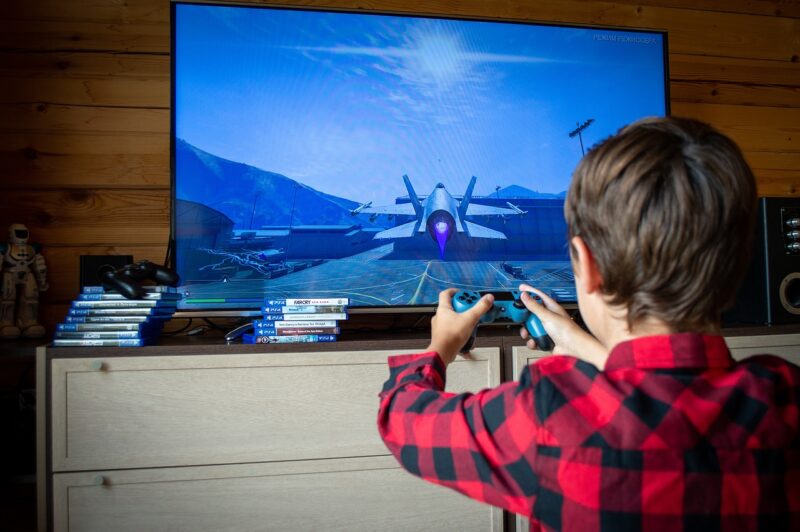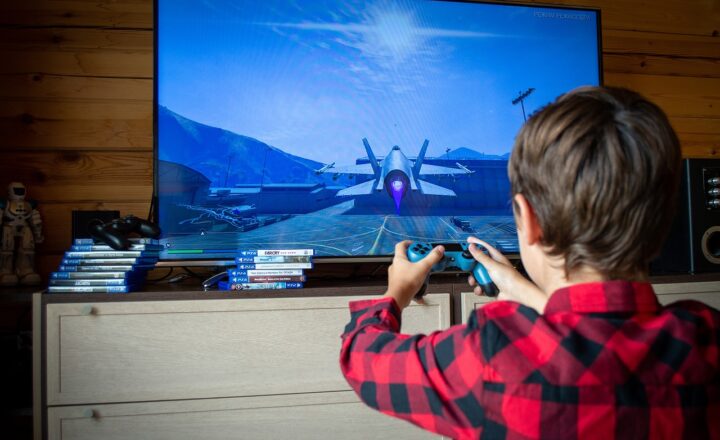How AI Is Enhancing Video Game Design and Player Experiences
November 16, 2024

As the video game industry continues to evolve, artificial intelligence (AI) is playing an increasingly significant role in transforming game design and player experiences. From improving graphics and animations to creating more complex narratives and personalized gameplay, AI is ushering in a new era of gaming. In this article, we will explore how AI is shaping the future of video games and what this means for developers and players alike.
1. The Evolution of AI in Video Games
AI has been a part of video games since the early days, but its applications have expanded dramatically over the years. Initially, AI was used primarily for non-player character (NPC) behavior, enabling them to react to player actions in a simple manner. Over time, advancements in algorithms and computing power have allowed for more sophisticated AI systems that can learn and adapt.
Today, AI technologies such as machine learning, procedural generation, and neural networks are employed to enhance various aspects of gaming. For example, neural networks can analyze player behavior to create tailored experiences, while procedural generation can develop vast, unique environments, ensuring no two playthroughs are the same.
2. Transforming Game Design with AI
AI is fundamentally changing the approach to game design. Here are a few ways AI is making an impact:
- Procedural Content Generation: AI algorithms can generate complex game worlds, levels, and content. This allows developers to create expansive environments without manually designing each area. Games like “No Man’s Sky” use procedural generation to produce an infinite universe of planets, each with unique ecosystems and wildlife.
- Dynamic Difficulty Adjustment: AI can analyze player performance in real-time, adjusting game difficulty to match skill levels. This ensures gamers remain engaged and challenged, reducing frustration and enhancing overall enjoyment. For instance, “Resident Evil” implements such systems to modify enemy encounters based on player success rates.
- Enhanced NPC Behavior: AI is enabling NPCs to exhibit more realistic behaviors, making them feel alive within the game world. Advanced AI-driven NPCs can learn from player interactions, altering their responses and strategies, creating a more immersive experience. Games like “The Last of Us Part II” showcase highly responsive AI that reacts realistically to player actions.
As game design continues to integrate AI, players can expect richer, more varied gaming experiences that evolve based on their interactions.
3. Personalized Player Experiences
AI’s ability to analyze vast amounts of data allows for highly personalized player experiences:
- Behavioral Analysis: AI systems can track player behavior, learning their preferences and play styles. This information can be used to adjust in-game elements such as quests, challenges, and storylines, ensuring the experience feels tailored to each individual player. Games like “Mass Effect” utilize branching narratives that adapt based on player choices.
- Player Retention Strategies: AI can identify when players are likely to disengage and implement strategies to keep them invested. This might include adjusting game elements to reignite interest or providing personalized in-game rewards to enhance long-term engagement. Mobile games like “Candy Crush Saga” often use AI to determine when to offer bonuses to keep players active.
- Virtual Companions: AI-driven companions can learn from and adapt to player behavior, providing a uniquely supportive role during gameplay. Games like “Detroit: Become Human” feature AI characters that inform and accompany players, enriching the narrative experience through realistic interactions.
This level of personalization not only enhances the player’s journey but fosters a deeper emotional connection to the game.
4. Enhancing Graphics and Animation
AI is also revolutionizing the graphics and animation aspects of video games:
- Realistic Graphics: AI technologies, like deep learning algorithms, enable developers to create more lifelike graphics, enhancing visual storytelling. Techniques such as AI upscaling can improve textures, reducing time and resources spent on manual graphics adjustments. Games like “Cyberpunk 2077” leverage AI to enhance visual fidelity and realism.
- Motion Capture and Animation: AI tools can automate the process of animating character movements, allowing for smoother and more varied animations. For instance, techniques like deep reinforcement learning can be used to model fluid character movements, making them appear more natural and responsive.
- Facial Recognition and Emotion Simulation: AI can analyze facial movements and expressions to create more realistic character animations. This capability allows for richer storytelling and emotional depth in characters, resulting in more compelling narratives. Many RPGs now use AI to convey intricate emotional dialogues that adapt based on the player’s choices.
The integration of AI in graphics and animation is enhancing all visual aspects of games, making the overall experience more engaging.
5. The Future of Gaming with AI
As technology continues to advance, the role of AI in video games will only become more prominent. The potential for AI-driven innovations is vast:
- Realistic AI Opponents: Future games may feature AI opponents that can learn and adapt over time, making them challenge players in new and unexpected ways. Instead of following preset patterns, AI could analyze individual players and adjust their strategies for a more dynamic gameplay experience.
- Creating Fully-Interactive Worlds: With improved AI technologies, developers could create games with expansive worlds inhabited by AI characters that behave based on players’ actions, creating truly immersive and responsive environments.
- Seamless Storytelling: AI could lead to games where narratives adapt fluidly to player choices, providing a more engaging and personalized experience than ever before. Imagine a game that can shift its storyline based on not just player decisions but also their emotional responses to events within the game.
The future of gaming looks incredibly promising as AI continues to advance, providing developers with new tools that can enhance gameplay and storytelling.
Conclusion
AI is dramatically reshaping the landscape of video game design and player experiences. From more realistic NPCs to personalized gameplay and stunning graphics, the integration of AI technologies is leading to an era of immersive gaming that was once considered a fantasy. As AI continues to evolve, players can expect even greater innovation, ultimately enriching their gaming adventures and forging deeper connections with the virtual worlds they explore.
This ongoing transformation presents both exciting opportunities and challenges for game developers, who must adapt to keep up with the rapidly changing landscape powered by AI. Ultimately, the synergy between creativity and technology will define the future of gaming and ensure that players are always at the heart of the experience.







